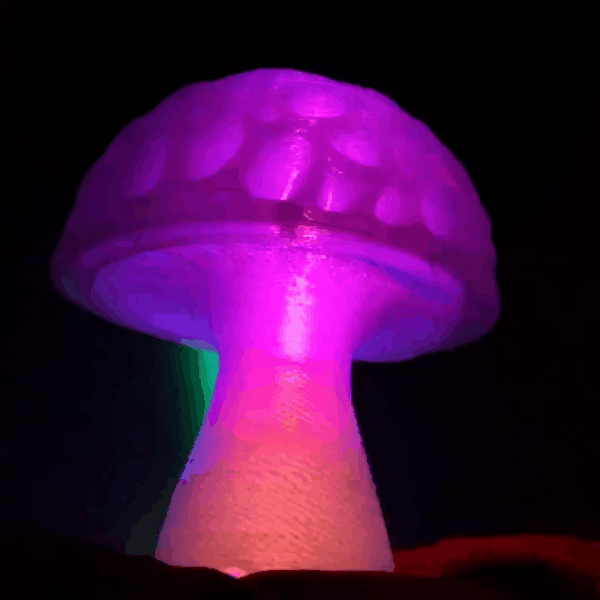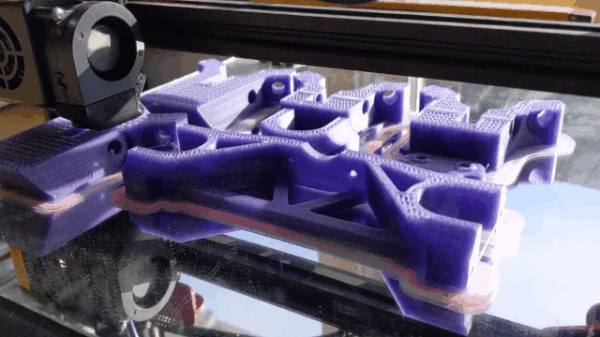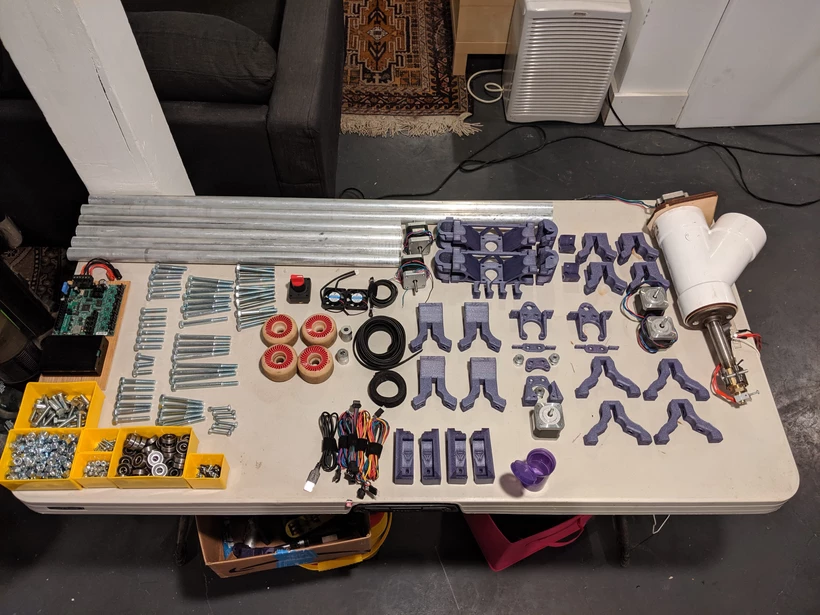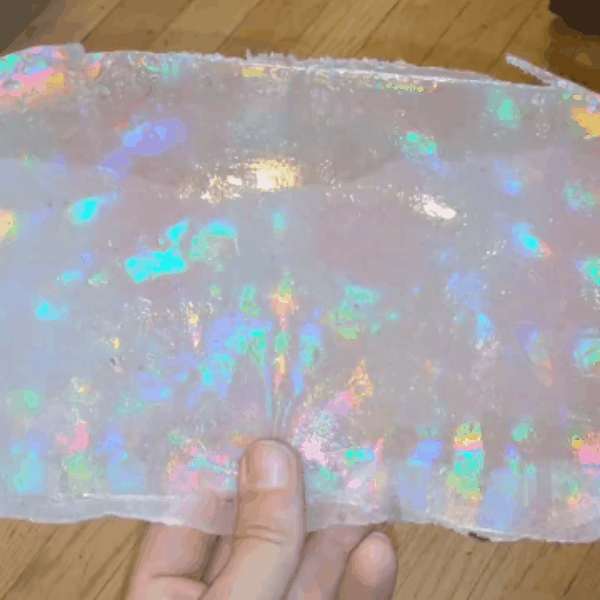[ Backlog - This log was adapted from my Patreon, to fill in the details about how this project has developed over the years. Check the link for the full post, and if you appreciate this project, consider supporting it! ]

November has been a very productive month! Here's what happened:
First, I successfully printed my most complex part ever with the trash printer- a 12" tall mushroom lamp. I found the model on Thingiverse, and wanted to see if I could get it to print on the Trash Printer. The biggest challenge was that most of my prints to date have been "spiral vase" style prints, which means that the extruder just moves in a continuous spiral for the entire print.
Spiral vase prints are fast and easy, but if ALL you can print with a printer is spiral vase parts, it limits the usefulness significantly. Since the trash printer extruder oozes a lot, stopping it and moving it can cause problems. I dialed in the settings in the software, so that it would give "extra length on restart", so that it would pause and feed extra material after a move, and that worked pretty well! I still had to watch it pretty closely, but it worked and that's a really good sign!

Next, I printed out all the parts I need to build an entirely new Trash Printer from scratch, so that I can record a full, step by step tutorial video. I uses this awesome sparkly purple filament we got from Proto Pasta at Maker Faire.

Now I'm just waiting on some pulleys and lead screws to arrive, and I can film the whole build one go. Look for that video by the end of December!

I also did some experiments with recycled plastic and diffraction grating. Diffraction film is made from PET plastic and has a much higher melting point than PP. The film has tiny microscopic ridges on it that give it that rainbow effect, and when you heat-press the film onto the PP sheet at around 425F, the PP melts, but the PET doesn't, and the PP makes a mold of the ridges on the film and becomes diffractive as well! The film is not destroyed in this process and you can just rainbow-ify recycled plastic over and over using only heat and pressure.
Neat!
 Sam Smith
Sam Smith
Discussions
Become a Hackaday.io Member
Create an account to leave a comment. Already have an account? Log In.